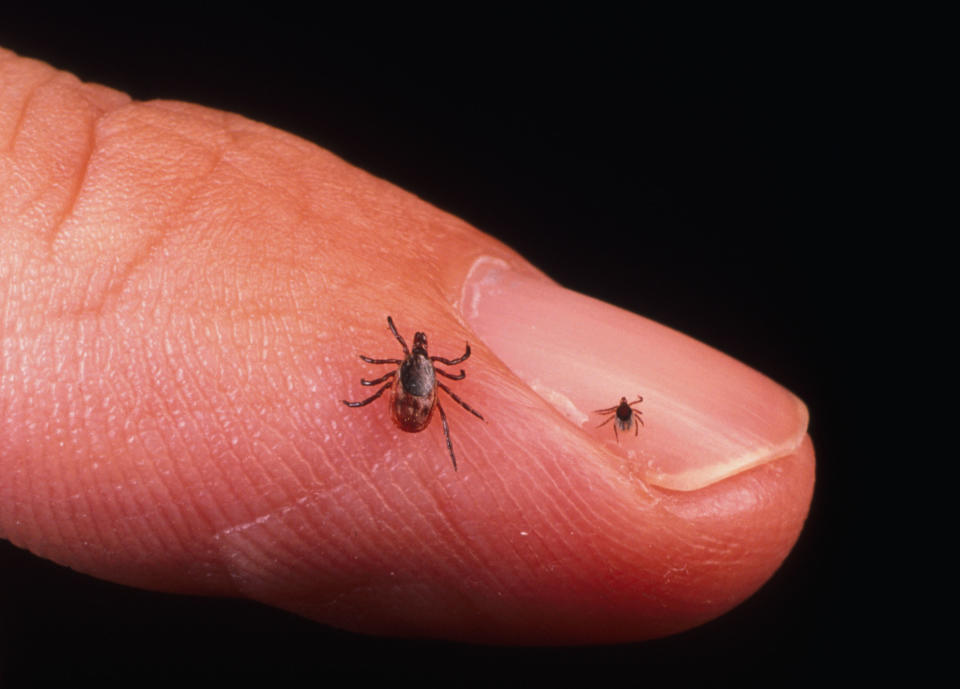Worried about Lyme disease? Find out if you're at risk
There are two reasons I don’t like camping. First, I don’t enjoy sleeping on the ground. Second, I have a fear of ticks.
This phobia of mine is not altogether irrational, since certain ticks are known to carry Lyme disease, an infection caused by a bacteria called Borrelia burgdorferi and is transmitted to humans through the bite of an infected tick. Black-legged ticks, also known deer ticks, are the main culprits.

The number of people who have Lyme disease is hard to determine. Studies say that 30,000 cases are reported every year, but the Centers for Disease Control and Prevention estimates that number may be closer to 300,000. Determining where Lyme disease strikes in the U.S. is a little easier to pinpoint, with most cases occurring in the Northeast, Mid-Atlantic, North Central, and Pacific Northwest regions.
The frustrating thing about Lyme disease is that it can take quite some time to properly diagnose. And sometimes the symptoms are similar to those one might experience due to other diseases, which is why it’s sometimes referred to as the “great imitator.” Some of the most common symptoms include fever, chills, headache, fatigue, muscle/joint aches, and swollen lymph nodes. Those ailments can occur with many other diseases, but one telltale sign that you may have Lyme disease is the appearance of an erythema migrans rash, or “bull’s-eye” rash. About 70-80 percent of people with Lyme disease will get the rash, and the rash itself is not typically itchy or painful.
If the disease is left untreated, more severe symptoms can occur, including heart palpitations, facial palsy, severe arthritis, and inflammation of the brain and spinal cord.
Preventing and treating Lyme disease
The good news is that there are things you can do to prevent Lyme disease. In most cases, it takes at least 36-48 hours for an attached tick to transmit the bacterial infection into the bloodstream, so it’s crucial to respond quickly.
“Stay away from high grass and brush where ticks like to hide,” advises Patricia DeLaMora, MD, a pediatric infectious disease specialist with NewYork-Presbyterian’s Komansky Children’s Hospital. Hikers should walk in the middle of hiking paths and wear long-sleeve shirts and pants to prevent ticks from making contact with skin. DeLaMora also suggests spraying your body with DEET and using a heavy-duty insecticide like permethrin for tents and other camping gear.
When you get indoors, it’s important to get your clothes quickly into the dryer. “Ticks can survive a washing machine cycle, but they cannot survive 10 minutes on high heat,” explains DeLaMora.
After treating your clothes, the next step is to get into the shower. Anything attached to you will get washed down the drain. After drying off, be sure to check your body for ticks, especially in places where they like to hide. This includes the scalp, the ears, and the groin area. A tick that is not engorged can be as small as a poppy seed, so it’s important to examine your skin carefully. If you have a pet, make sure to give them a tick check as well.
If you think you’ve been bitten by a tick, it’s crucial that you consult a professional.
“In the first four to six weeks after tick exposure, it’s really a clinical diagnosis, meaning you’re going to go to your doctor because you don’t feel well,” says DeLaMora. “Early disease is a clinical diagnosis, you just go right on antibiotics. Later stages of the disease that happen several months after a tick bite … can be diagnosed with a blood test.”
Armed with all this information, I feel a little more confident about any potential tick encounters. Still, I don’t see myself camping anytime soon … unless I have an air mattress!
Read more from Yahoo Lifestyle:
Follow us on Instagram, Facebook, and Twitter for nonstop inspiration delivered fresh to your feed, every day.

